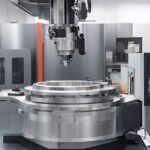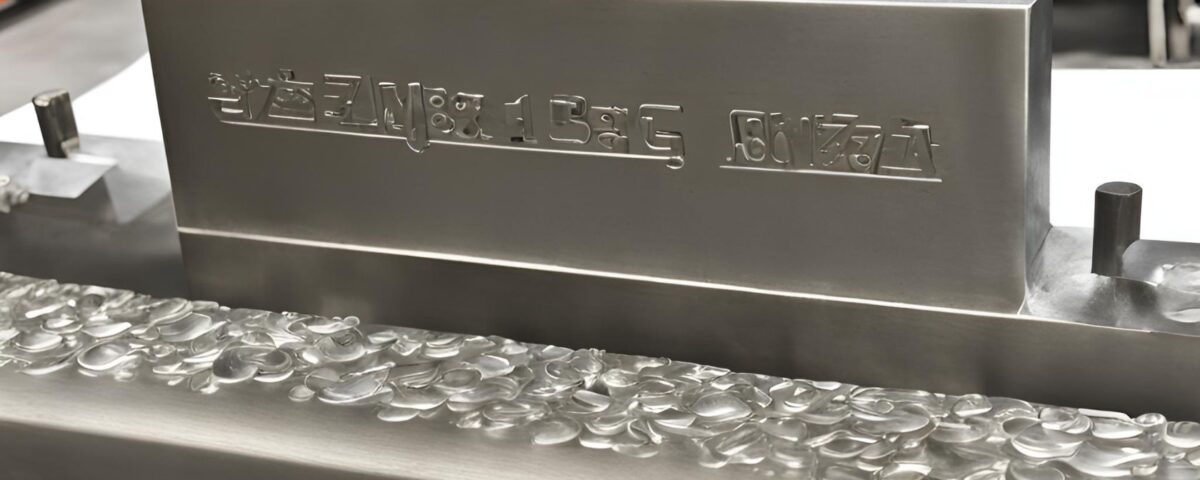
The Ultimate Guide to Finding the Perfect Auto Spare Parts Supplier
21 June 2024
Exploring the Various Types of Five-Axis Machine Tools
26 June 2024Introduction to Stamping Bar
Stamping bar play a critical role in modern manufacturing, particularly in the automotive, aerospace, and electronics industries. These components are essential for producing a variety of parts with precision, efficiency, and cost-effectiveness. This article delves into the intricate details of stamping bars, exploring their applications, materials, processes, and benefits
What are Stamping Bar?
Stamping bar, also known as stamped bars or stamped components, are metal parts produced through the stamping process. Stamping involves placing a flat sheet of metal into a stamping press where a tool and die surface forms the metal into the desired shape. This process can include various operations such as punching, blanking, bending, and embossing.
Applications of Stamping Bar
- Automotive Industry: Stamping bar are used to create body panels, brackets, engine components, and other critical parts. The automotive sector relies heavily on the precision and durability of stamped components to ensure vehicle safety and performance.
- Aerospace Industry: In aerospace, stamping bars are essential for producing lightweight and strong components that can withstand extreme conditions. These parts include structural components, brackets, and fittings.
- Electronics Industry: Stamping bar are used in the manufacturing of electronic components such as connectors, terminals, and shielding parts. These components require high precision and conductivity.
- Medical Devices: The medical industry uses stamping bars to produce surgical instruments, implants, and other medical devices that require high precision and biocompatibility.
- Construction: In construction, stamped metal parts are used in frameworks, supports, and various structural components. The durability and strength of these parts are critical for safety and longevity.
Materials Used in Stamping Bar
The choice of material for stamping bar depends on the specific application and the required properties of the finished product. Common materials include:
- Steel: Carbon steel and stainless steel are popular choices due to their strength, durability, and resistance to corrosion.
- Aluminum: Aluminum is favored for its lightweight and excellent corrosion resistance, making it ideal for aerospace and automotive applications.
- Copper: Copper and its alloys are used for their excellent electrical conductivity, making them suitable for electronic components.
- Brass: Brass is used for its machinability and resistance to corrosion, often found in plumbing and electrical applications.
- Titanium: Titanium is used in aerospace and medical applications for its high strength-to-weight ratio and biocompatibility.
Types of Stamping Operations
Stamping operations can be categorized into several types, each serving a specific purpose in the manufacturing process:
- Blanking: Blanking involves cutting a flat piece of metal from a larger sheet. This is often the first step in creating a stamped part.
- Piercing: Piercing is the process of punching holes or other shapes into the metal sheet. This is commonly used to create openings for fasteners or other components.
- Bending: Bending involves deforming the metal along a straight axis to create angles or curves. This is used to produce brackets, frames, and other structural parts.
- Forming: Forming involves shaping the metal into a three-dimensional form using a combination of bending, stretching, and compressing.
- Embossing: Embossing creates raised or recessed designs on the metal surface, often used for decorative or functional purposes.
- Coining: Coining is a precision stamping process that creates fine details and smooth surfaces on the metal part.
- Drawing: Drawing involves pulling the metal into a die to create a deeper shape, such as a cup or cylinder.

Assessing the quality of auto spare parts
The use of stamping bars in manufacturing offers several advantages:
- Precision and Accuracy
One of the primary benefits of using stamping bars is the high level of precision and accuracy they provide. Stamping processes are capable of producing parts with tight tolerances and intricate details, which is essential for industries such as automotive, aerospace, and electronics. The consistent accuracy of stamping bars ensures that each part meets the exact specifications required for complex assemblies.
- High Production Speed
Stamping bars enable manufacturers to achieve high production speeds, significantly reducing the time needed to produce large quantities of parts. This is particularly beneficial in industries with high demand for mass production, such as consumer electronics and automotive sectors. The efficiency of stamping processes allows for faster turnaround times, helping manufacturers meet tight deadlines and market demands.
- Cost-Effectiveness
Using stamping bars can lead to substantial cost savings in the manufacturing process. The high-speed production capabilities reduce labor costs and minimize the need for manual intervention. Additionally, the precision of stamping bars minimizes material waste, as parts are produced with exact dimensions, reducing the need for secondary operations and rework. These factors contribute to a more cost-effective manufacturing process overall.
- Versatility in Materials
Stamping bars are compatible with a wide range of materials, including metals, plastics, and composites. This versatility allows manufacturers to choose the best material for their specific application, ensuring optimal performance and durability of the final product. Whether it's producing metal brackets, plastic enclosures, or composite components, stamping bars provide the flexibility needed to work with various materials.
- Enhanced Strength and Durability
Parts produced using stamping bars often exhibit enhanced strength and durability compared to those manufactured through other processes. The stamping process can work-harden materials, improving their mechanical properties and making them more resistant to wear and tear. This is particularly advantageous for applications requiring high-strength components, such as automotive chassis parts and aerospace structural elements.
- Consistency and Repeatability
The use of stamping bars ensures a high level of consistency and repeatability in the manufacturing process. Once the tooling is set up, the same stamping bar can produce thousands or even millions of identical parts with minimal variation. This consistency is crucial for maintaining quality standards and ensuring that each part fits perfectly within the larger assembly.
- Complex Geometries and Customization
Stamping bars enable the creation of complex geometries and customized designs that may be challenging to achieve with other manufacturing methods. This capability is essential for industries that require unique and intricate part designs, such as medical devices and consumer electronics. The ability to customize parts according to specific requirements enhances product innovation and functionality.
Stamping Process Explained
The stamping process for creating bars involves several key steps:
- Design and Prototyping: Utilizing CAD (Computer-Aided Design) software, engineers design the tooling and dies required to produce the stamping bars. Prototyping may involve simulation to ensure that the tooling can achieve the desired shape without causing defects in the metal.
- Die Making: Dies are precision-machined from high-quality steel to withstand the stresses of the stamping process. The die design is crucial as it needs to precisely contour the metal sheet into the desired shape.
- Sheet Metal Feeding: Metal sheets are fed into the stamping press where the dies are installed. Depending on the complexity of the part, sheets may be pre-treated or lubricated to facilitate easier shaping and prevent wear on the tools.
- Stamping: The press applies high pressure to the dies enclosing the metal sheet, causing the metal to deform into the shape of the die. This can be a single stage or multi-stage process depending on the complexity of the bar's design.
- Trimming and Secondary Operations: Excess material from the stamped bars is trimmed off, and additional operations such as bending, piercing, or drawing are performed if required.
- Finishing: The stamped bars may undergo various finishing processes such as plating, painting, or powder coating to improve appearance or resistance to corrosion.
- Inspection and Quality Assurance: Each batch of stamped bars is inspected to ensure they meet all specified dimensions, tolerances, and material properties. This may involve both visual inspections and the use of measurement tools and machines.
Challenges faced in Stamping Bar
1.Material Selection and Quality
One of the primary challenges in stamping bar operations is the selection of appropriate materials. The material must possess the right balance of strength, flexibility, and durability to withstand the stamping process and the end-use application. Common issues include:
- Inconsistent Material Properties: Variations in material properties can lead to defects such as cracking, warping, or incomplete stamping.
- Supply Chain Issues: Sourcing high-quality materials consistently can be difficult, leading to delays and increased costs.
2.Tooling and Die Wear
Tooling and die wear are significant concerns in the stamping bar process. The repeated high-pressure impact can lead to:
- Tool Wear and Tear: Regular use causes tools and dies to wear out, leading to reduced precision and quality.
- High Maintenance Costs: Frequent maintenance or replacement of tools and dies can be costly and time-consuming.
3.Precision and Tolerances
Achieving the required precision and tolerances is crucial in stamping bar operations. Challenges include:
- Dimensional Accuracy: Ensuring that the stamped bars meet exact specifications can be difficult, especially with complex geometries.
- Consistency: Maintaining consistent quality across large production runs can be challenging.
4. Production Speed and Efficiency
Balancing production speed with quality is a constant challenge. Issues include:
- Cycle Time: Reducing cycle time without compromising quality is essential for meeting production targets.
- Downtime: Equipment breakdowns and maintenance can disrupt production schedules.
5. Heat Management
The stamping process generates significant heat, which can lead to:
- Thermal Distortion: Excessive heat can cause thermal distortion in both the stamped bars and the tooling.
- Material Degradation: Prolonged exposure to high temperatures can degrade material properties.
6.Noise and Vibration
The stamping process can produce high levels of noise and vibration, leading to:
- Workplace Safety Issues: Prolonged exposure to noise and vibration can affect worker health and safety.
- Equipment Wear: Vibration can accelerate wear and tear on machinery.

Innovations in Stamping Technology
Advancements in stamping technology continue to enhance the capabilities and efficiency of the process. Some notable innovations include:
- Servo-Driven Presses: Servo-driven presses offer greater control over the stamping process, allowing for precise adjustments and improved part quality.
- Progressive Die Stamping: Progressive die stamping uses a series of dies to perform multiple operations in a single pass, increasing efficiency and reducing handling.
- Computer-Aided Design (CAD): CAD software enables the precise design and simulation of stamping dies, reducing development time and costs.
- Automation and Robotics: The integration of automation and robotics in stamping operations enhances productivity, consistency, and safety.
- Advanced Material Composition:
The development of new materials has revolutionized the performance and durability of stamping bars. High-strength alloys, composite materials, and advanced coatings like titanium nitride (TiN) and diamond-like carbon (DLC) are now commonly used. These materials enhance the wear resistance and longevity of stamping bars, reducing the frequency of replacements and maintenance downtime. This leads to higher productivity and lower operational costs. - High-Speed Stamping Technology : One of the most significant innovations is the advent of high-speed stamping technology. Modern stamping bars are designed to withstand the rapid, repetitive motions of high-speed presses. These presses can operate at several hundred strokes per minute, drastically increasing production rates. High-speed stamping bars are engineered with precise tolerances to ensure consistent performance even under extreme conditions, which is critical for industries requiring mass production of complex parts.
Conclusion
Stamping bar are a fundamental component in modern manufacturing, offering precision, efficiency, and versatility. From automotive and aerospace to electronics and medical devices, stamped parts play a crucial role in producing high-quality, reliable products. While the stamping process presents some challenges, advancements in technology and materials continue to enhance its capabilities and applications. As industries evolve and demand for complex, high-performance components increases, the importance of stamping bars in manufacturing will only grow.
By understanding the intricacies of stamping bar and leveraging the latest innovations, manufacturers can optimize their production processes, reduce costs, and deliver superior products to their customers.




